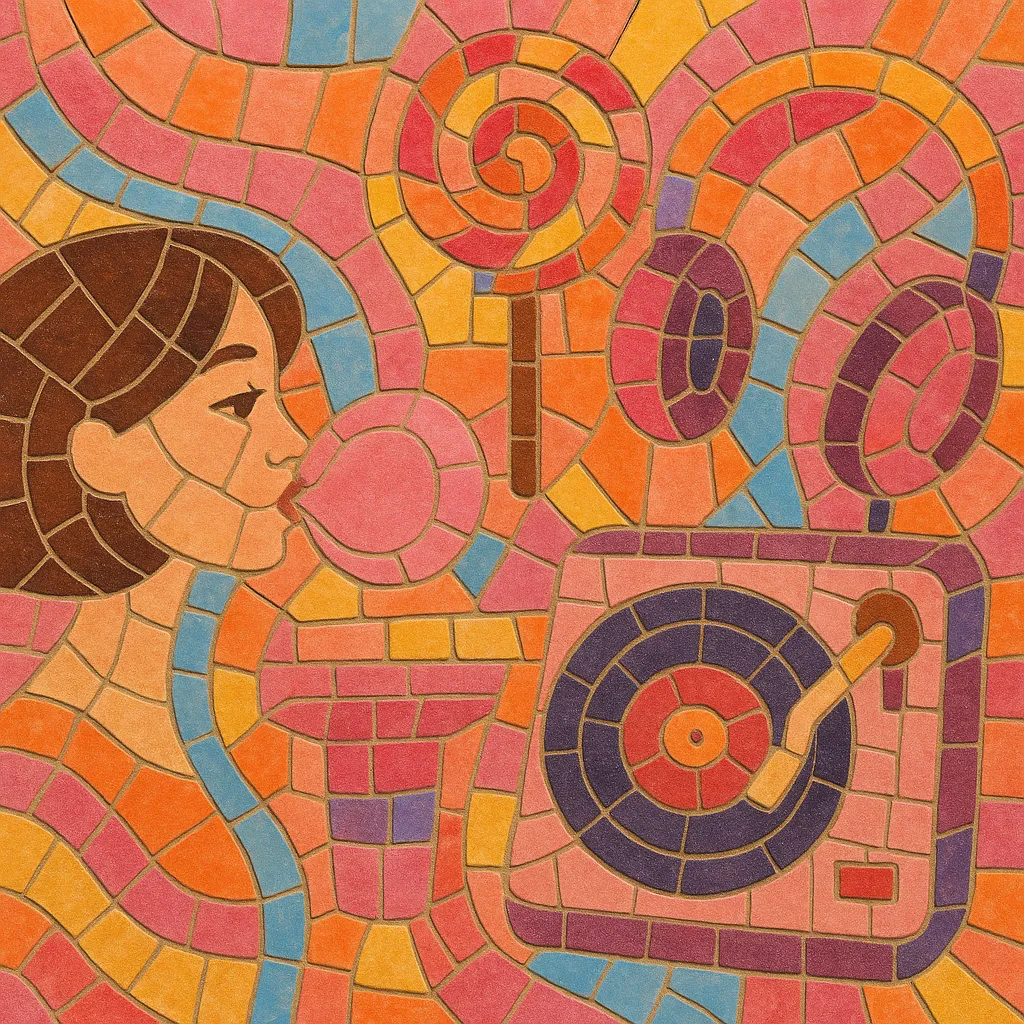
Bubblegum pop is an upbeat, hook-saturated strain of pop music engineered for immediate catchiness and mass youth appeal.
It favors short songs, simple melodies, bright major-key harmonies, handclaps, sing-along choruses, and playful onomatopoeia or nonsense syllables (la-la, na-na, sha-la-la).
Typical productions use clean, jangly guitars, tambourines, tambourine-like percussion, and sweet backing vocals, often performed by session musicians working under producer-driven studio projects.
Lyrically it is lighthearted and G-rated, centering on teen romance, dancing, and fun; musically it sits between early rock and roll, Brill Building pop, girl-group stylings, and a sprinkle of psychedelic color.
The sound was designed for radio singles, TV tie-ins, and merchandising, making it one of the earliest consciously “manufactured” pop subgenres.
Bubblegum pop emerged in the United States in the late 1960s as producers and music publishers sought ultra-catchy radio singles for a young teen and pre-teen audience. Drawing on Brill Building craft, girl-group pop, early rock and roll, and doo-wop earworms, they distilled songs to compact, hook-driven forms. Studio projects and TV/film tie-ins were key: Don Kirshner helped spearhead the model with The Monkees and later The Archies, while Buddah Records and the Kasenetz-Katz production team (Jerry Kasenetz and Jeff Katz) became synonymous with the style.
The genre exploded between 1968 and 1970 with hits like The Ohio Express’s "Yummy, Yummy, Yummy," 1910 Fruitgum Company’s "Simon Says," The Lemon Pipers’ "Green Tambourine," and The Archies’ "Sugar, Sugar"—a No. 1 phenomenon that epitomized the style. Songs often featured chant-like hooks, handclaps, simple I–IV–V progressions, and bright, compressed production perfect for AM radio.
Bubblegum’s approach bled into glam-leaning UK pop (early The Sweet) and teenybopper acts (Bay City Rollers, The Partridge Family). While rock albums and singer-songwriter fare gained cultural cachet, bubblegum’s single-focused, youth-marketed format continued in television and merchandising-centric projects, extending the template of producer-assembled pop groups.
Though its initial wave waned, bubblegum pop left a durable imprint on later teen pop, dance-pop, and global idol systems. Its DNA—sticky choruses, simple progressions, and cute branding—reappeared in 1990s teen pop, European "bubblegum dance," J-pop idol kayō traditions, and K-pop’s bright concepts. Punk-adjacent bands (notably the Ramones) and later pop-punk and power pop acts borrowed its economy and melody-first ethos, proving that bubblegum’s craft outlived its novelty reputation.

